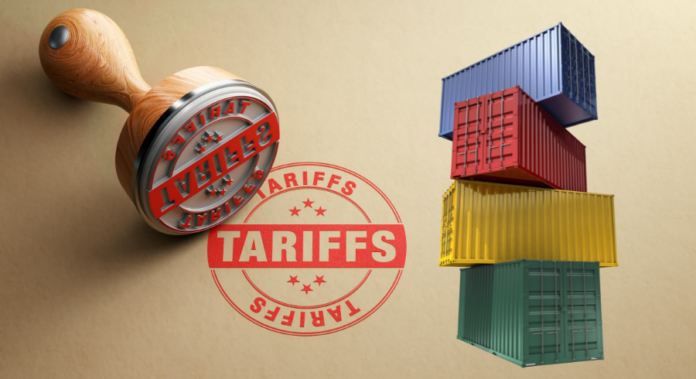The Ministry of Commerce has unveiled its National Tariff Policy (NTP) for 2025–30, which has already been approved as part of the federal budget. The policy is designed to stimulate export growth by 10–14% and manage import growth at a slower pace of 5–6%, with the goal of narrowing the trade deficit.
Under the NTP, the government plans to establish a more transparent and comparable tariff structure based on regional economies. The policy sets a target of achieving a simple average tariff rate of 9.7% by FY 2029–30, which will be achieved through a gradual reduction in tariffs.
In the first two years, tariffs are expected to drop by over 20% annually, followed by a 5–10% reduction in the subsequent years.
Key reforms in the NTP include the readjustment of Customs Duty (CD) slabs from five to four (0%, 5%, 10%, and 15%) over five years, with a maximum CD reduction to 15% in the same period.
Additionally, the policy calls for the elimination of Regulatory Duties (RDs) and Additional Customs Duties (ACDs) within four to five years. The overall trade-weighted average tariff is expected to decrease from the current 10.6% to below 6% in the next five years.
The existing tariff structure, which currently follows a cascading principle with five slabs (0%, 3%, 11%, 16%, and 20%), has been criticized for inhibiting industrialization and diversification. The NTP seeks to simplify this structure by adjusting the slabs and reducing tariff peaks, particularly in sectors like automotive.
The excessive use of ACDs and RDs over the past 15 years has led to a complex and high tariff system. The NTP aims to eliminate these duties gradually, with a focus on reducing the protective nature of tariffs and ensuring fairness in the system. The auto sector, which has been subject to high tariffs, will see a gradual reduction in these duties starting July 2026.
Additionally, the NTP outlines plans to phase out the 5th Schedule of the Customs Tariff, which currently offers concessions to certain domestic industries. This process will be carried out over the next four to five years, simplifying the tariff structure and removing industry-specific exemptions that have led to inefficiencies and higher compliance costs.
The tariff reforms are expected to have a significant impact on exports, with predictions of a 10-14% increase in export growth. Imports will also rise, but at a slower pace, contributing to a reduction in the trade deficit. The policy is aimed at encouraging investment, strengthening industries, and promoting job creation in export-oriented sectors.
Experts also anticipate that the reduced tariffs will help lower the cost of raw materials and intermediate goods, thus mitigating imported inflation, particularly in food products. The NTP represents a comprehensive effort to boost Pakistan’s competitiveness in the global market while ensuring sustainable economic growth.





Now that seems like a positive development.